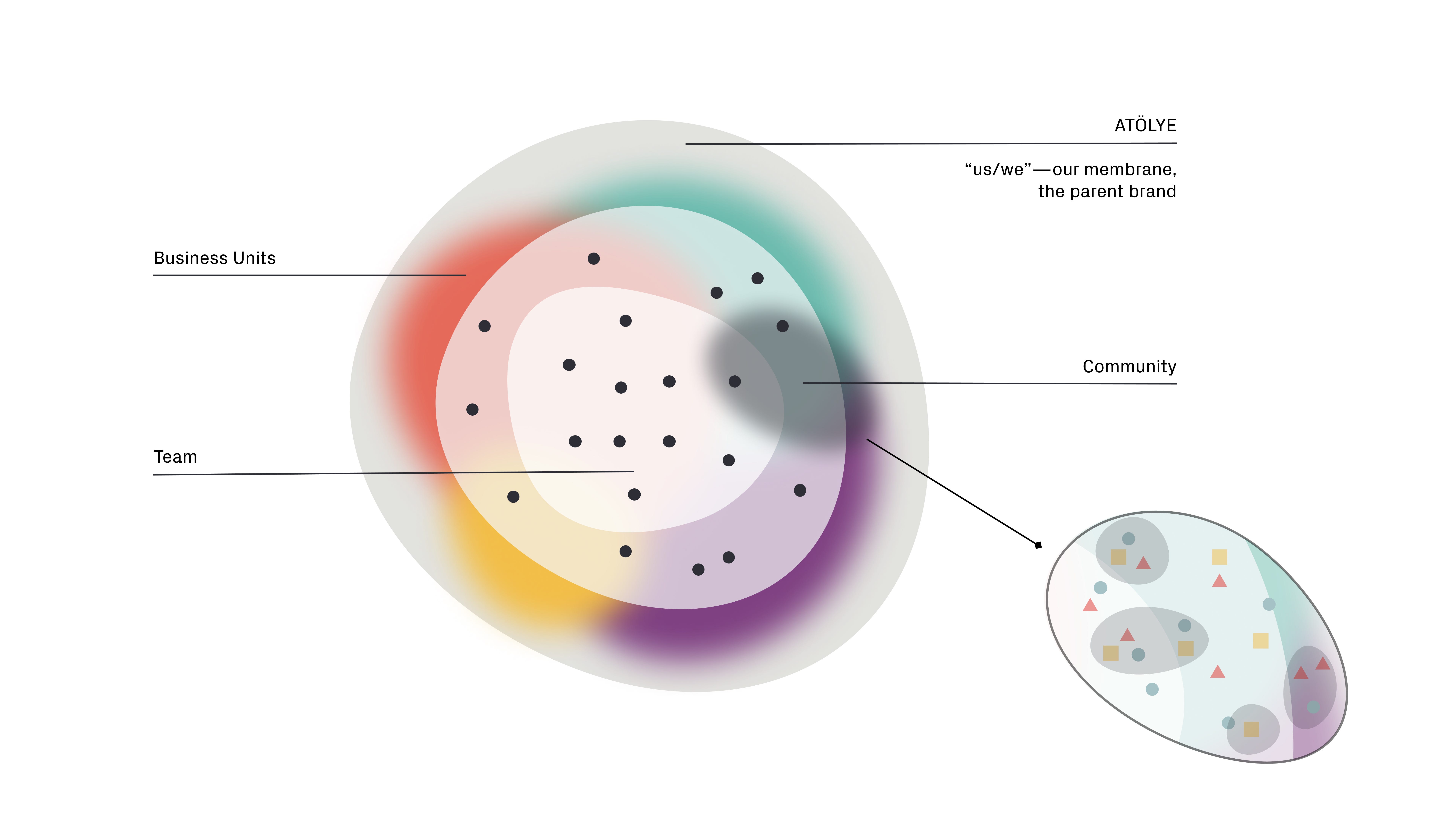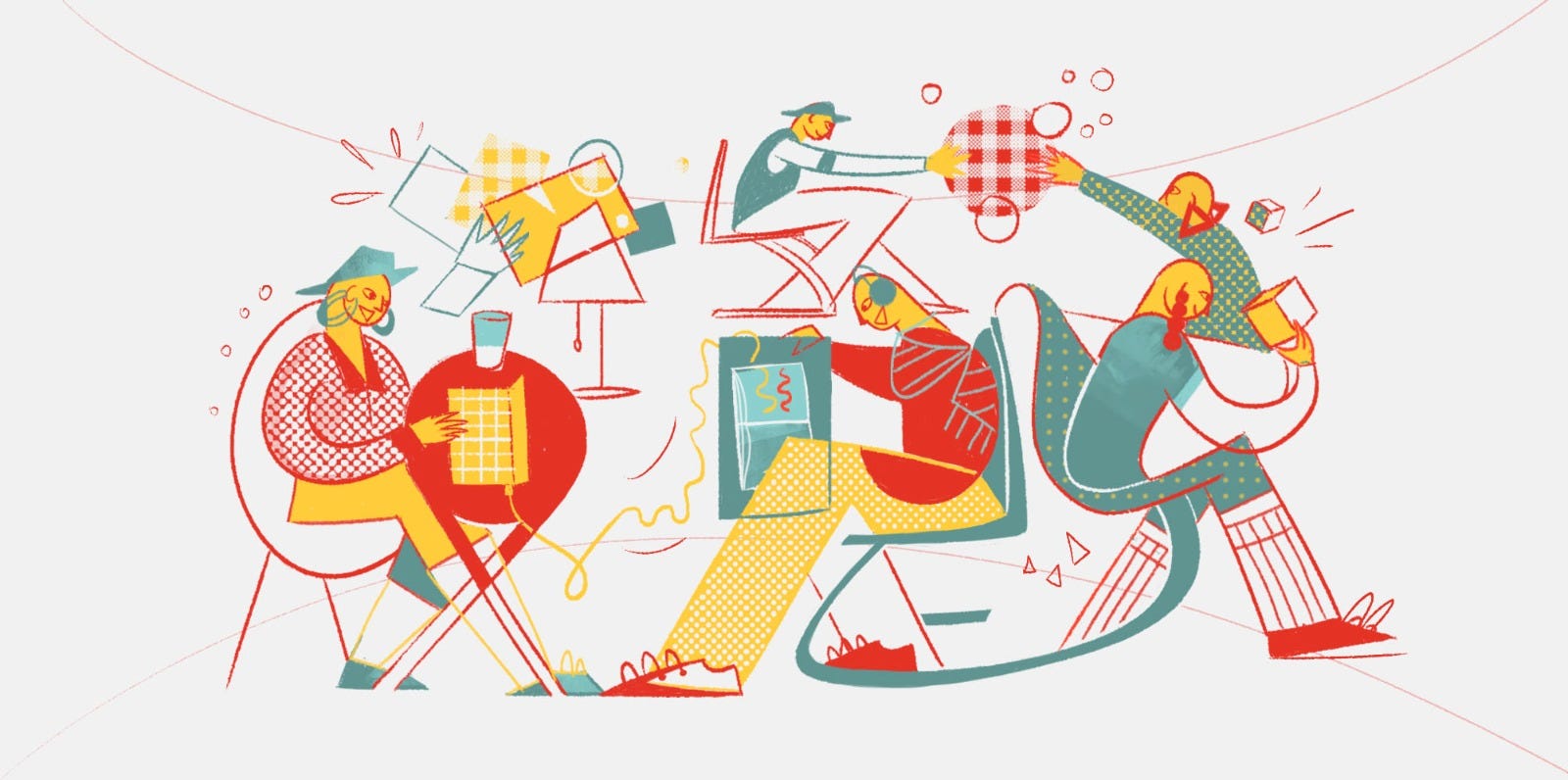The Future of Collaboration in Coworking Spaces
Published in ATÖLYE Insights · 6 min read · January 17, 2022
Adopting a platform mindset beyond dependencies on physical space
Author: Engin Ayaz Editors: Ömer Faruk Ataş, Özgür Arslan, Melissa Clissold, Oytun Elacmaz In-text illustrations: Aleyna Tezer
As coworking has taken over the world throughout the last decade, it is timely to reflect upon the value of such an offering for the upcoming years. We, at ATÖLYE, believe that an opportunity lies in shifting the focus from running a real estate-focused coworking model to becoming an end-to-end platform-based business.*
Vitalizing Interactions
Coworking spaces first entered the business landscape as an efficient option for real-estate utilization, which meant that their performance was measured in metrics such as the usage of the physical space and the streamlining of their shared services. Later, in a bid to increase the number of interactions that took place inside, the concept was complemented by activities like community-building and programming from an optics standpoint. However, in my opinion, these additions failed to live up to the connections and collaborations that they had promised.
This lack of dynamism stemmed from a lack of an incentive system for enhanced interaction and collaboration. Most of these spaces simply do not have the mechanisms necessary to monitor the collaborations that take place, nor do they benefit from them. In other words, some co-working spaces do not operate as "platforms." This mindset does not only manifest itself in co-working spaces. Even accelerators and incubators occasionally miss the point and focus solely on providing services to startups while helping each of them grow in silos rather than in tandem.
Looking ahead, we believe that the real opportunity lies in creating genuine platform businesses, in which the physical space becomes only one of the many touchpoints.
Being able to measure the interactions among members is a crucial part of running such a platform. In parallel, rewarding those who stand out with their generosity, contribution, and engagement by making them the beneficiaries of the value generated within the community would be a great incentive for members to be more active. Sharing such value can be more indirect and intangible via blockchain-powered tokens or automated interaction quotients, or even directly via company shares or profit-sharing.
Interaction Quotients
ATÖLYE believes in collaboration, and the coworking space model contributes to it but is not inherently sufficient. How members co-learn via our rituals (such as journals, 101 classes, skill shares, or potluck lunches where an element of play is prominent) is an important element, and so is how we foster a sense of belonging through shared play and experiences.
Here is how we bring up the learn-work-play framework into this:
At ATÖLYE, we have developed the Interaction Quotient system to quantify the interactions among the ATÖLYE community.
It runs as a points system where we monitor the daily activities of community members and assign them points based on their frequency and depth/breadth of activity vis-a-vis various interaction touchpoints.
The Interaction Quotient is not only a measurement tool but also an incentive mechanism that encourages members to contribute more and gives visibility to their contributions. Awarding those whose interaction points are above a certain level via free membership, community exposure or engaging them in a community board, for example, are some of the ways we incentivize dynamism.
Building on Personal Journeys
The real benefit to elevate here is to offer a more diverse, fluid, and impact-focused environment compared to other environments:
- Diverse because of the member profile and how we curate, which also means more serendipity, creative leaps, and overall interesting experience.
- Fluid because every member can do their own thing but is exposed to a lot of different possibilities and potential.
- Impact-focused because ATÖLYE is really focused on bringing its members together around projects.

We also do our best to capture these stories of serendipity and transformation in any way we can - including a dedicated short video series called "ATÖLYE Journeys." The word journey is key here, we think. These stories help us glimpse into people's lives and aspirations and see the part the ATÖLYE community plays in it. In these videos, there are stories of people encountering ATÖLYE through a public event who then transition into community members and later project collaborators. There are also stories of people who leave their full-time jobs to pursue careers where they could offer more good to the world.
Our workspace environment acts as a container to enable social and professional encounters to take place in a fluid way. This fluidity allows people to express their alternate professional and social identities. Roles, levels, and all other hierarchies dissolve within the serendipitous interactions happening in the workspace. The more we design for these interactions to occur, the stronger the build trust and kinship is in our team and community - and this is what facilitates collaborations to flourish.
Concluding Remarks
If we take a step back, in this world we are living, we are over-indexing the importance of physical spaces.
Organizations define themselves and tell their stories through spaces - just take a look at their "About" pages. What really matters, though, is the individuals and the connections between them.
Looking at the notion of co-working with that mindset, co-working spaces should be - and ultimately will be - part of a much larger cause and portfolio.
Therefore, we believe the future of coworking spaces lies in their ability to offer the right basis for co-learning and co-creation for their curated communities, and specifically, becoming creative platforms with the right mechanisms in place to measure and incentivize interactions, connections, and collaborations among their members.

A few examples of this model are starting to appear. On Deck, for example, brings people together around common causes and interests; they accompany each other on an incredible learning journey - they truly are "co-working." If one day On Deck decided to open a physical space and hosted a physical version of its currently-digital journey and platform there, it would have a much different spatial aura than the average co-working space.
On the flipside, a "race to the bottom" lies ahead for those who run co-working spaces built solely on a real-estate model.
There are simply too many urban spaces that generate low added value when their main value proposition is providing infrastructure to its users. In response to this, we believe that entities that embrace a digital-first-platform mindset, the value of serendipitous connections and the power of deep collaboration are bound to differentiate in the market.
As ATÖLYE, we look forward to a future with thriving gardens of interactions across the globe, where the physical setting becomes both the stage and the marker of work that busts silos, encourages interdisciplinary thinking and drives real impact on the ground.
As always, any feedback is more than welcome.
*Note: At ATÖLYE, we specifically refer to our space as a "Creative Hub" (not a coworking space); and we see this hub as a place where we can foster individuals and teams who aspire to connect, learn and grow around purpose-driven work - check out our previous article on the subject here.
